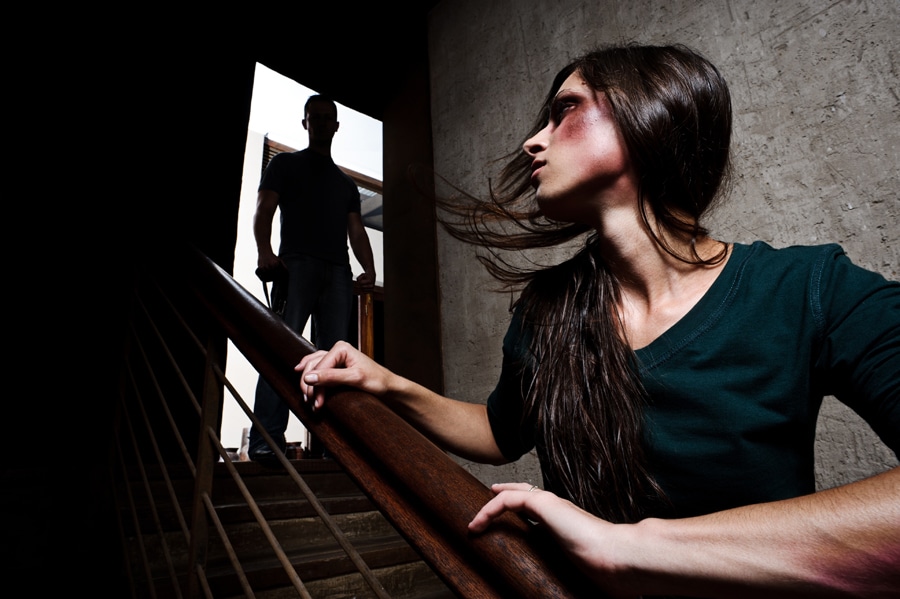California law spells out precisely who may own, carry, or use a firearm and what firearms are legal. Automatic weapons, for example, are illegal in this state. Convicted felons and most offenders who are currently on probation may not legally possess firearms in California.
What does the state have to prove to convict a defendant of brandishing a weapon? What are the penalties for those who are convicted? If you are charged with brandishing a weapon in California, what legal defenses can a criminal defense attorney offer on your behalf?
The law in California also prohibits “drawing, exhibiting, or using a firearm or deadly weapon.” This is called “brandishing” a weapon. A crime is committed in this state when a weapon is “brandished” in a threatening manner for the purpose of intimidating or threatening others.
WHAT DOES IT TAKE TO CONVICT SOMEONE OF BRANDISHING A WEAPON?
To convict you for brandishing a weapon, a prosecutor in California must prove first – and beyond a reasonable doubt – that you exhibited or drew a firearm or another deadly weapon in the presence of another person or persons.
Secondly, a prosecutor must also prove that:
1. The weapon was brandished in a threatening, rude, or angry manner.
2. The weapon was brandished in a quarrel or in a fight.
3. The weapon was not brandished in self-defense or in the defense of another person.
You may be charged with brandishing a weapon even if you did not point the weapon at anyone, discharge the weapon, and even if the weapon was not loaded. Nevertheless, brandishing a weapon is considered a serious criminal charge in this state. In fact, in some cases, it’s a felony.
HOW CAN A CRIMINAL DEFENSE LAW FIRM HELP?
In southern California, if you are arrested and charged with brandishing a weapon, you must be advised and represented by a reliable and experienced Los Angeles criminal defense attorney, and you must arrange to meet with that attorney as quickly as possible after the arrest.
A good California defense lawyer will examine the details of the charge against you, explain your rights and options, and fight aggressively to bring your case to its best possible conclusion. But exactly how will your lawyer represent you if you are accused of brandishing a weapon?
WHAT ARE THE DEFENSES AGAINST A BRANDISHING A WEAPON CHARGE?
The defenses against the charge include but are not limited to:
1. You acted in self-defense and/or in the defense of others.
2. Your manner was not rude, threatening, or angry.
3. You were misidentified as the person brandishing the weapon.
4. The story is fabricated and the incident in fact never happened.
In the state of California, you are legally acting in self-defense and/or in the defense of other persons if you reasonably believe that you and/or someone else are about to be harmed, and you defend yourself and/or other persons only with the minimum force needed to avert that harm.
Simply drawing or exhibiting a weapon is not enough by itself for a California prosecutor to win a conviction against you for brandishing. A weapon might be legally drawn or exhibited by a gun safety instructor in a firearms class, for example, or by a retailer at a customer’s request.
WHEN CAN BRANDISHING A WEAPON BE CHARGED AS A FELONY?
In most cases in California, brandishing a weapon or firearm is charged and prosecuted as a misdemeanor, but in two very precise circumstances, California prosecutors have the discretion to charge the alleged crime either as a misdemeanor or as a felony:
1. When someone is charged with brandishing a weapon or a firearm in a threatening, angry, or rude manner or during a fight upon the premises of a daycare center while that daycare center is open, the charge may be filed as a misdemeanor or as a felony.
2. When someone is charged with brandishing a weapon or a firearm in a threatening, angry, or rude manner in the presence of a law enforcement officer performing his or her duties, the charge may be filed as a misdemeanor or as a felony.
WHAT ARE THE PENALTIES FOR A BRANDISHING A WEAPON CONVICTION?
Listed here are the potential penalties for anyone in California who is convicted of brandishing a weapon:
1. A misdemeanor conviction for “drawing a deadly weapon” in a rude, angry, or threatening manner or during a fight is punishable with a thirty-day jail sentence.
2. A misdemeanor conviction for “exhibiting a firearm” under the same circumstances is punishable with a six-month jail term.
3. Additionally, a conviction for brandishing a firearm in public – if the firearm can be concealed – is punishable in California with a one-year jail term and/or a $1,000 fine.
4. However, when brandishing a weapon is charged as a felony, a conviction is punishable with up to three years in a California state prison.
5. For any firearms offense committed on school grounds, an offender will also be prosecuted for a violation of the California Gun-Free School Zone Act.
6. A conviction on any firearms charge in California may also mean the loss of the firearm or weapon. Second and subsequent convictions, as you might imagine, may be penalized more harshly.
HOW DOES THE LAW DEFINE A FIREARM AND A DEADLY WEAPON?
But you still may be wondering: Precisely how does the law in California define a firearm? And what is the definition of a deadly weapon?
A “deadly weapon” is defined as “any object, instrument, or weapon that is inherently deadly or dangerous or one that is used in such a way that it is capable of causing and likely to cause death or great bodily injury.”
A “firearm” is defined as “any device, designed to be used as a weapon, from which is expelled through a barrel, a projectile by the force of any explosion or other form of combustion.” A firearm does not have to be loaded in order for someone to be charged with brandishing it.
In southern California, if you are charged with brandishing a weapon, you must be defended by a Los Angeles criminal defense attorney who has substantial experience representing defendants who face weapons charges.
A good attorney’s help is your right. And if you’re facing a weapons charge in California, your future could depend on it.









